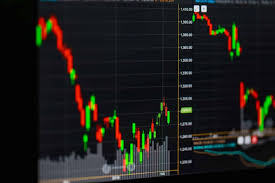
Forex trading, or foreign exchange trading, is the act of buying and selling currencies in the foreign exchange market with the aim of making a profit. It’s one of the largest financial markets in the world, with an average daily trading volume exceeding $6 trillion. In this article, we will delve into a comprehensive example of forex trading, outlining fundamental concepts, strategies, and the importance of choosing the right broker like forex trading example Trading Broker UZ for your trading activities.
What is Forex Trading?
Forex trading involves exchanging one currency for another, typically through brokers who facilitate these transactions. Each currency pair, such as EUR/USD or GBP/JPY, represents the value of one currency against another. Traders speculate on price movements, aiming to buy low and sell high to capitalize on fluctuations.
The Basics of Currency Pairs
Currencies are traded in pairs, indicating their relative value. The first currency in the pair is known as the base currency, while the second is the quote currency. When trading a currency pair, the trader is essentially betting on the strength of the base currency against the quote currency. For instance, if a trader believes that the euro will strengthen against the US dollar, they would buy the EUR/USD pair.
Example of a Forex Trade
Let’s consider a practical example: a trader has decided to buy the USD/JPY pair. The current exchange rate is 110.50, meaning 1 US dollar equals 110.50 Japanese yen. The trader believes that the US dollar will appreciate against the yen. They place an order to buy 1 lot (which typically equals 100,000 units) at this rate.
After some time, the exchange rate rises to 112.00. The trader decides to close their position. To calculate the profit, we can use the formula:
Profit = (Closing Rate - Opening Rate) x Trade Size
Substituting in the numbers:
Profit = (112.00 - 110.50) x 100,000 = 1.50 x 100,000 = $1,500
In this example, the trader has made a profit of $1,500 by correctly predicting the movement of the currency pair.
Strategies in Forex Trading
Several strategies can guide a trader’s decisions in the forex market. Here are a few common ones:
1. Day Trading

Day trading involves opening and closing trades within the same trading day. Traders who engage in day trading aim to profit from short-term price movements, often using technical analysis to inform their decisions.
2. Swing Trading
Swing trading allows traders to hold positions for several days or weeks, taking advantage of expected price swings. This style requires a clear understanding of market trends and typically involves less frequent trading than day trading.
3. Position Trading
Position trading is a longer-term strategy where traders hold their positions for weeks, months, or even years, aiming to capitalize on long-term trends. This strategy often relies on fundamental analysis.
Risk Management in Forex Trading
One of the critical aspects of forex trading is the management of risk. Since the forex market can be highly volatile, effective risk management strategies can protect traders from significant losses. Here are some essential risk management techniques:
1. Use of Stop Loss Orders
A stop loss order automatically closes a trader’s position when the market moves against them by a specified amount. This mechanism helps to minimize loss and protect capital.
2. Position Sizing
Traders should determine the size of their trades based on their risk tolerance. This means adjusting the size of each position according to the percentage of their trading account they are willing to risk on a single trade.
3. Diversification
Just like in any investment strategy, diversifying across different currency pairs can reduce risk. By not putting all your capital into a single trade, you can mitigate potential losses.
The Role of Brokers in Forex Trading
Brokers play a crucial role in forex trading. They provide traders with access to the markets and facilitate trades. It’s essential to choose a reputable broker that offers competitive spreads, robust trading platforms, and responsive customer support. Traders should conduct thorough due diligence before selecting a broker, ensuring that they are regulated and have a good reputation in the industry.
Conclusion
Becoming a successful forex trader involves understanding the market dynamics, developing solid trading strategies, and practicing effective risk management. The example provided illustrates how profitability can be achieved through careful analysis and execution of trades. By choosing the right broker and continually educating yourself on market conditions and trading techniques, you can improve your chances of success in the highly competitive forex market.
